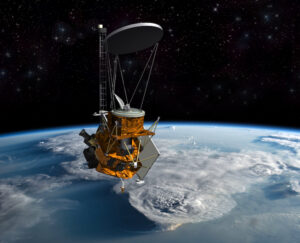Ball Aerospace wins NOAA weather instruments study contracts

SAN FRANCISCO — Ball Aerospace won four National Oceanic and Atmospheric Administration contracts worth a combined $2.32 million for weather satellite and instrument design studies.
In announcing the awards June 30, Boulder, Colorado-based Ball also described a fifth initiative with L3Harris Technologies of Melbourne, Florida, and PlanetiQ of Golden, Colorado, called Joint LEO Sounding Mission Study. The companies plan to evaluate the weather-gathering capability of small satellites equipped with Ball microwave instruments, L3Harris infrared sounders and PlanetiQ global navigation satellite system radio occultation receivers.
For the Joint LEO Sounding Mission Study, Ball will assess whether all the instruments could be integrated on Ball small satellites. Ball also will consider whether commercial launch options that would allow NOAA to take delivery of the small satellites in orbit, according to a June 30 news release.
“Operational weather satellites are a critical part of the nation’s infrastructure, playing a key role in keeping the public safe and the economy strong by enabling forecasters to predict and reduce the impacts of extreme weather events,” Makenzie Lystrup, Ball Aerospace Civil Space vice president and general manager, said in a statement. “Through close coordination with the broader weather community, Ball developed a series of innovative technology and mission solutions to meet NOAA’s most critical space-based observational needs in an affordable and sustainable way. These studies are a continuation of this effort.”
The four study contracts awarded to Ball are:
- Auroral Imager in Tundra – Ball is working with Computational Physics Inc. of Springfield, Virginia, to compare cost and performance of promising strategies for a dedicated auroral imager operating in a highly elliptical Tundra orbit.
- Ball Operational Weather Instrument Evolution (BOWIE) Microwave – Ball will evaluate the baseline design of an instrument about half the size of microwave instruments on current polar-orbiting weather satellites. For the six-month study, Lexington, Massachusetts-based Atmospheric and Environmental Research, a Verisk business, will assist in analysis of the instrument design and performance.
- BOWIE Compact Hyperspectral Infrared Observations – Ball will investigate technology and performance tradeoffs for a hyperspectral infrared sounding instrument designed for small satellites in geostationary orbit.
- BOWIE Low-Earth Orbit IR Sounder – Ball will explore compact instrument designs to meet NOAA’s atmospheric vertical temperature and moisture profiling requirements. Through the study, Ball will also lay out technological options for addressing cost versus performance tradeoffs for infrared sounders for low-Earth orbit.
Ball built the NASA-NOAA Suomi National Polar-orbiting Partnership satellite, launched in 2011, and the first Joint Polar Satellite System spacecraft launched in 2017. Ball also is manufacturing the Weather System Follow-On satellite for the U.S. Space Force and Ball won a contract June 25 to build, integrate and operate NOAA’s Space Weather Follow On satellite destined for Sun-Earth Lagrange Point 1.
NOAA is awarding a series of contracts to evaluate new instruments, spacecraft, business models and mission concepts for the space-based architecture to succeed the Joint Polar Satellite System and Geostationary Operational Environmental Satellite R series.
As of June 30, NOAA had awarded more than $13.5 million to 15 companies for 25 studies, according to the U.S. government website beta.SAM.gov.
from SpaceNews.com https://ift.tt/3eMjmUE
Comments
Post a Comment